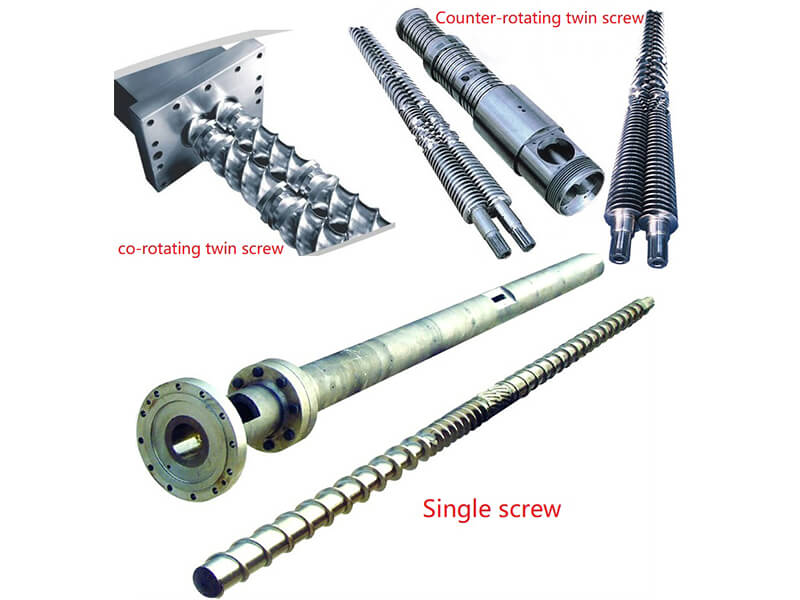JORBIN MACHINER, we promise to supply high quality machine with high competitive prices.
Expecting cooperation with you, Let us become friendly partners, common development!
The basic mechanism of extrusion is easy——The screw rotates in the barrel, push the plastic forward. The screw is actually a bevel, it wrap around the center layer is to increase the pressure to overcome greater resistance. For the extruder, it have three kind of resistance need to overcome: The friction of solid particles (feeding) on the wall of the barrel and the friction between them during the first few turns of the screw rotation (feeding zone), The adhesion of melted plastic on the barrel wall. The resistance of internal flow as the melted plastic push forward. Newton once explained that, if the thing is not moving in a certain direction, the force on the thing is balanced in that direction. Although it may rotate rapidly laterally around the circumference,the screws do not move axially. Therefore, the acting of axial force on the screw is balanced, if it exerts a greater forward thrust for the plastic melt, and it also exerts the same backwards thrust for the thing. In this, it acts on the thrust bearing in the back of feed port by exerting thrust.

Most of single screws are right rotating screws, such as screws and bolts are used in woodworking and machinery. If you look them in the back, they can rotate towards opposite direction, as they must try their best to rotate out of cylinder. In some twin screw extruder, the two screws rotate in reverse in the two cylinders and cross each other, so a screw must be right-handed, another screw must be left-handed. In another type of bite twin screw, the two screws rotate in the same direction, so they must be in the same direction. However, in this two cases, they all have thrust bearing to absorb opposite force, Newton's principles still apply.
Extrudable plastics are thermoplastics-melt on heating, cooling and solidifying again. Where does the production of heat by meliting plastic come from? Feed preheater, barrel and mold heater maybe work, it is very important at startup, but electrical machinery input energy-friction heat generates in the barrel when the electrical machinery rotates the screw to overcome the resistance of the viscous melt-is the most important heat source in all plastics, except small system and low-speed screw, high-temperature plastics and extrusion coating apply.
For all other operation, it is important to realize that barrel heaters are not the main heat source in operation, so the influence of extrusion is less than we expected. The rear barrel temperature may be still very important, because it can effect the grooves or solids transfer speed in feeding. The temperature of die head and mold should usually reach or close to needed melt temperature, unless using in special purpose,such as glazing, fluid distribution or pressure control.
In most extruder, the screw speed change by adjusting motor's rotating speed. The motor usually spin speed fully about 1750 RPM, but it is too fast for the extruder screw. If it rotates at so high speed, and will produce excess friction heat, and plastics' residence time is too short, uniform and well-stirred melt for the plastic can not be prepared. Typical deceleration rate between 10:1 and 20:1.At first stage, the gears and pulleys can be used, but at second stage, using the gears and screws that located in the center of the large gear.
In some low-speed machineries (such as UPVC two-screw), they may have three stage of deceleration,maximum speed may be as low as 30 rpm or lower(rate is 60:1). At the another extreme, some of the very long twin screw used for mixing can operate at 600 RPM or faster speed, so needing very low deceleration rate and abundant deep cooling. Sometimes deceleration and task are not matching-do not use too much energy-and it is possible to add the pulley block between the motor and the first deceleration stage that changes the maximum speed.